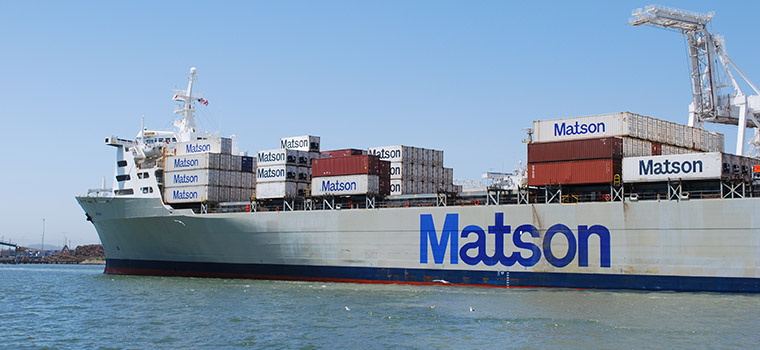BY PATRICK BURNSON
Published: February, 2018
Last month we reported that Port of Oakland’s containerized import volume for 2017 was on a pace to exceed inbound throughput for all previous years. Now comes word that 2017 was the busiest year in the port’s 90-year history, as it handled the equivalent of 2.42 million 20-foot containers last year. That broke the previous record of 2.39 million containers set in 2014.
The port said it broke two more records in 2017, with 919,523 loaded import containers and 1.85 million combined imports and exports. The port said import growth drove its record performance. It reported that imports increased four percent in 2017 over 2016 totals. December imports were up 6.4 percent over the same month in 2016.
The port attributed the import rally to a strong U.S. economy and increasing consumer demand for retail products. “Our record-setting 2017 has set the stage for the future,” said Port of Oakland Maritime Director John Driscoll. “With new development projects already underway, we expect to increase our capacity and drive greater volume.”
The port said it expects Cool Port Oakland—a 280,000 square-foot temperature-controlled distribution center—to open in late summer 2018. It projects that the clearinghouse for agricultural exports will handle about 30,000 containers full of chilled and frozen meat products annually. The port said work on its 440,000-square-foot Seaport Logistics Complex could begin by spring.
Matson Announces New Vessels
Oakland-based Matson, a leading U.S. carrier in the Pacific, announced the start of production on two new combination container and roll-on/roll-off (“con-ro”) vessels for its Hawaii fleet that are scheduled for delivery in the fourth quarter of 2019 and second quarter of 2020, respectively.
After a small ceremony at General Dynamics NASSCO’s shipyard in Southern California, the cutting of steel plates began, initiating the construction work to build both ships. Matson is calling these vessels the “Kanaloa Class” in honor of the ocean deity revered in the native Hawaiian culture. The firm will name each of the new vessels after predecessor ships from its 135-year history.
The first vessel will be named Lurline, the sixth Matson vessel to carry that name, while the second vessel will be its fifth named Matsonia. The Kanaloa Class vessels are being built on a 3,500 twenty-foot equivalent unit vessel platform, which is 870 feet long, 114 feet wide (beam), with a deep draft of 38 feet and enclosed garage space for up to 800 vehicles or breakbulk cargo.
In addition, the new vessels will have state-of-the-art green technology features, including a fuel-efficient hull design, environmentally safe double-hull fuel tanks, fresh-water ballast systems and dual-fuel engines, meaning that they will be able to operate at speeds up to 23 knots on either conventional fuel oils or liquefied natural gas.
These advancements are important to Hawaii as a means to reduce fuel consumption, and will result in significant emissions reductions over time.
“Construction of these new ships underscores Matson’s commitment to serve Hawaii with the largest, most reliable and environmentally friendly vessels for the long-term,” said Ron Forest, Matson’s president. “The Kanaloa Class is designed specifically to meet Hawaii’s freight demands while reducing our environmental impact and improving our efficiency for decades to come.”
General Dynamics NASSCO, a wholly owned subsidiary of General Dynamics, is a leading U.S. shipyard constructing vessels for the U.S. military and for commercial operation in the Jones Act market.
State of the Port Luncheon Held at Jack London Square
Matson was one of several sponsors of last month’s State of the Port luncheon at Scott’s Jack London Square, where Chris Lytle, the Port of Oakland’s executive director, brought working waterfront stakeholders up to date on cargo-centric operations.
Other “platinum” sponsors included the port itself and GSC Logistics. “Gold” sponsors were SSA Terminals; Devine Intermodal; Pacific Merchant Shipping Association; Clyde & Co.; Keesal, Young & Logan; and PCC Logistics.
This column will provide a full account of Lytle’s address and other highlights of the event in next month’s edition.
Patrick Burnson is the executive editor of Logistics Management. www.logisticsmgmt.com

